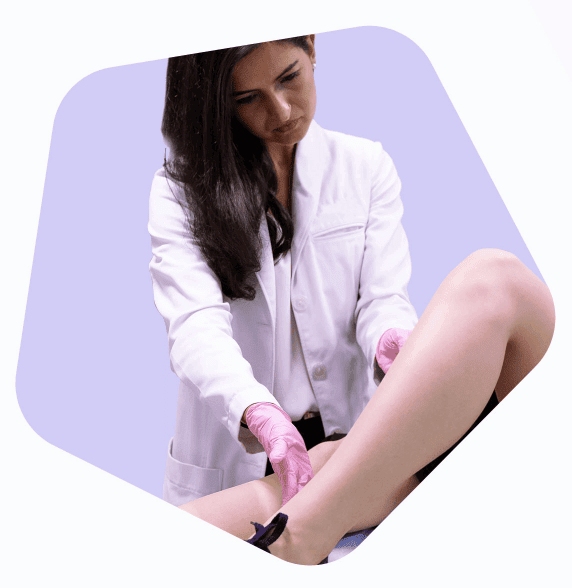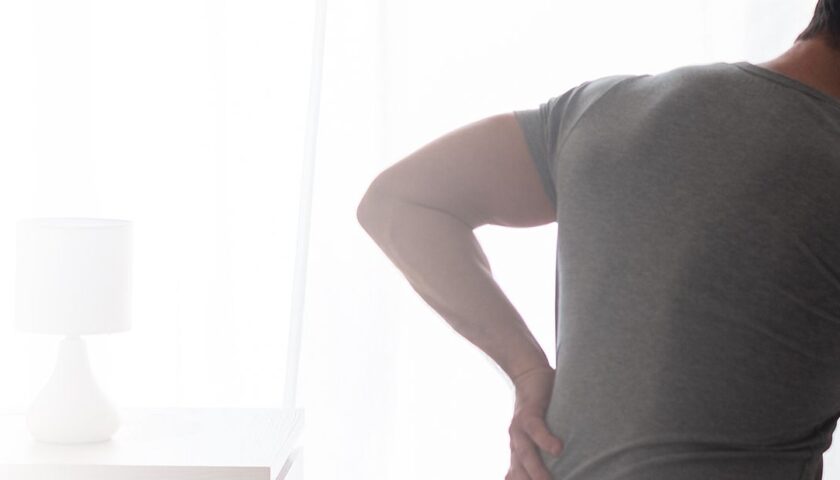Vein clinics specialize in treating a variety of vein-related issues, ranging from cosmetic concerns to more serious health problems like deep vein thrombosis (DVT) and varicose veins. So, what does a vein clinic do exactly? A vein treatment specialist at a vein clinic offers comprehensive treatments designed to alleviate symptoms, improve appearance, and ensure long-term vascular health. Let’s dive into the common treatments offered at these clinics, so you can understand the options available for effective vein care.
1. Sclerotherapy: An Effective Solution for Spider Veins and Small Varicose Veins
Sclerotherapy is one of the most common treatments used by vein treatment specialists to address spider veins and small varicose veins. The procedure involves injecting a solution directly into the affected veins, causing them to collapse and eventually disappear. This treatment is quick, minimally invasive, and requires no downtime. It is an ideal option for individuals looking for an effective way to treat veins that are visible on the skin’s surface.
Sclerotherapy is typically recommended for smaller veins and can be used on areas such as the legs, face, and chest. The solution used for the injections is usually a saline or sclerosing agent, which irritates the vein walls, prompting the vein to close. Over time, the vein is absorbed by the body, and blood flow is redirected to healthier veins.
2. Endovenous Laser Therapy (EVLT): Targeting Larger Varicose Veins
Endovenous laser therapy (EVLT) is a minimally invasive procedure used to treat larger varicose veins. This treatment involves using laser energy to heat and close off damaged veins. A vein treatment specialist inserts a small laser fiber into the vein through a tiny incision, and the laser heats the vein, causing it to collapse. As a result, blood is rerouted to healthier veins, and the varicose vein gradually disappears.
EVLT is an outpatient procedure, meaning patients can go home the same day. It’s a great option for individuals with larger varicose veins or those who experience significant pain or discomfort due to their vein issues. EVLT is effective, offers minimal recovery time, and has a high success rate.
3. Radiofrequency Ablation (RFA): A Non-Surgical Approach to Varicose Veins
Radiofrequency ablation (RFA) is another popular non-surgical treatment for varicose veins. Similar to EVLT, RFA uses heat to close off problem veins. However, instead of a laser, RFA uses radiofrequency energy. The procedure begins with a small catheter being inserted into the affected vein. The catheter delivers radiofrequency energy to the vein walls, causing them to collapse and seal off the vein.
RFA is an excellent alternative for patients who may not be candidates for other treatments. It is highly effective for larger varicose veins and offers the benefit of a relatively short recovery time. Patients can typically resume their regular activities within a few days following the procedure.
4. Ambulatory Phlebectomy: Surgical Removal of Varicose Veins
For larger, more complicated varicose veins, ambulatory phlebectomy may be recommended by a vein treatment specialist. This procedure involves making small incisions along the affected vein to remove it surgically. While the procedure is slightly more invasive than other vein treatments, it is still minimally invasive compared to traditional surgery.
Ambulatory phlebectomy is performed under local anesthesia and can be done on an outpatient basis. It’s ideal for patients who have varicose veins that are too large or twisted to be treated with other methods. Once the vein is removed, blood flow is redirected to healthier veins, and the patient is left with a smoother, more even appearance.
5. Vein Grafting: A More Complex Procedure for Severe Cases
In rare cases, when veins are severely damaged or diseased, a vein grafting procedure may be needed. This involves removing a section of healthy vein from another part of the body and using it to bypass the damaged veins. Vein grafting is more complex than the other treatments discussed and is typically reserved for patients with significant vein problems that cannot be treated with other methods.
While vein grafting is not common, it can be a lifesaving procedure for patients who suffer from chronic venous insufficiency or severe varicose veins that have led to complications like ulcers or blood clots. This treatment requires a longer recovery period, and patients may need to stay in the hospital for observation.
6. Compression Therapy: A Conservative Treatment for Vein Disorders
Compression therapy is often one of the first recommendations a vein treatment specialist will suggest for patients with mild vein issues. It involves wearing compression stockings that apply pressure to the veins, helping blood flow more efficiently and reducing swelling. Compression therapy is particularly effective for conditions like varicose veins, spider veins, and chronic venous insufficiency.
Compression stockings come in different compression levels, so it’s important to work with a vein specialist to determine the right type of stockings for your specific condition. While compression therapy won’t eliminate veins entirely, it can significantly improve symptoms such as pain, swelling, and heaviness in the legs.
7. Ultrasound-Guided Foam Sclerotherapy: Advanced Treatment for Large Veins
Ultrasound-guided foam sclerotherapy is a more advanced version of traditional sclerotherapy that is used to treat larger veins that may be difficult to target with standard sclerotherapy. During this procedure, the vein treatment specialist injects a foam solution into the vein, using ultrasound imaging to guide the injections accurately.
This treatment is particularly useful for veins that are deeper beneath the skin’s surface and are larger than the typical veins treated with sclerotherapy. The foam solution works similarly to the standard sclerosing solution but allows for more precise targeting and is effective in treating larger veins that cannot be treated with traditional sclerotherapy.
8. Lifestyle Modifications and Prevention
While vein treatments can provide significant relief and improvement, a vein treatment specialist may also suggest lifestyle modifications to help prevent future vein problems. These may include:
- Regular exercise to improve circulation
- Maintaining a healthy weight to reduce pressure on the veins
- Elevating the legs to promote blood flow
- Avoiding prolonged sitting or standing
- Wearing compression stockings for added support
These preventive measures can be used in conjunction with medical treatments to ensure that your veins stay healthy and free from complications.
Conclusion
Vein clinics offer a wide range of treatments designed to address everything from cosmetic concerns to serious health issues related to veins. Whether you’re dealing with spider veins, varicose veins, or more severe conditions like chronic venous insufficiency, a vein treatment specialist can provide the care you need to restore both the health and appearance of your veins. It’s important to consult with a professional to determine the best treatment plan for your individual needs. Understanding what does a vein clinic do is the first step in receiving the right care and achieving optimal results for vein health.





